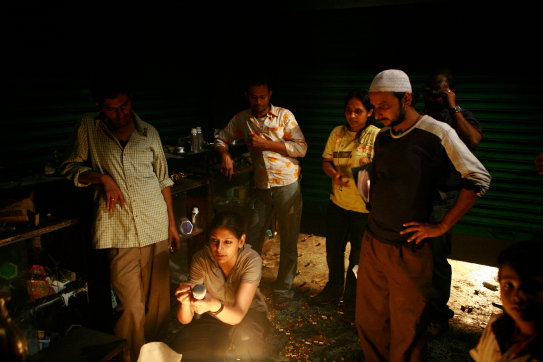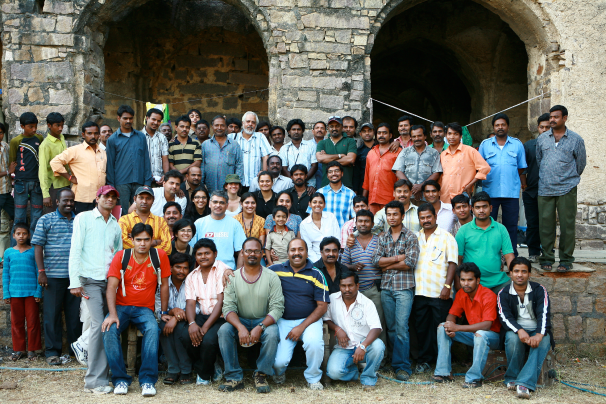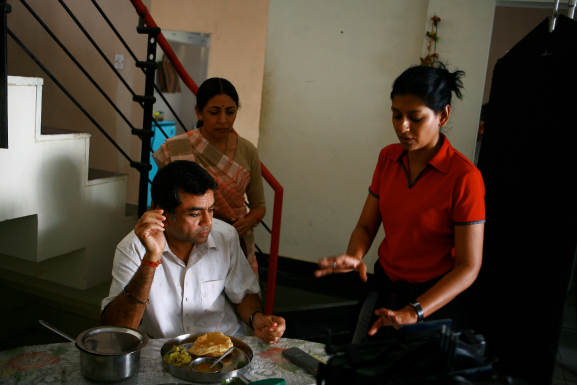A dramatic experiment
- February 1, 2014
When someone ventures into a new terrain, there are always questions and also admiration for the brave. The more the world plays safe and becomes straitjacketed, the greater is the need for innovations. And they are exciting even when they are not revolutionary and simply deviations from the well-trodden path.
Cineplay is one such experiment. It is a new form that cinematically captures theatre for those who may find it difficult, and often even impossible, to watch live stage plays. Even some of us, who are more privileged and not challenged by proximity, affordability and exposure to the arts, have missed so many masterpieces. But with digitisation at our disposal, it would be a real shame to not document the best of our plays, to not make them accessible to a lot more people. Did you know that Tumhari Amrita, a contemporary classic, despite a run of 450 shows, has not been shot? And now with the sad demise of its lead actor FarooqueShaikh, it never will be. What a loss to theatre and its viewers.
While my husband, Subodh, conceived the idea and I coined the word Cineplay, I have to admit I was sceptical of this hybrid form. And this was not because I am a puritan but because theatre and films are two different forms of art, each with its own language. How can a live medium that thrives on audience energy be brought on a flat screen? And how can cinema, with its larger than life canvas, be confined to a stage set? But Cineplay does not claim to replicate theatre or pose as a film. It is a new experience. And what makes it unique is that it expands the accessibility of theatre and archives it for posterity. There are many other bonuses, like its use for educational purposes. Plays that have faded away get revived and a whole new range of content is available for an audience that is hungry for variety, which an inherently conservative mass media may not be able to deliver.
But some theatrewallas ask if this would take away the limited audience live theatre has. In fact, it may bring even those who have never been to a theatre, perceiving it as an elite activity. When we like a CD of a musician, don’t we want to hear him/her live? Cineplay aims to be an aide to theatre and not its competitor. And from the initial response, it is clear that most theatre practitioners are actually eager to experiment with the new form. Apart from reaching to a much larger audience, they get to share the revenues from this untapped opportunity. Asmost of them either struggle to do what they like doing, or struggle to do what they do not like doing, just to be able to afford their passion. Maybe, what satellite rights of films did to the economics of cinema, Cineplay will do for plays. Subodh often compares it with a cricket match, which was earlier only seen in a stadium. Of course, the energy and enthusiasm of being in the stands, cheering together with thousands of people cannot be replicated. But today the whole country enjoys it in their homes and they have the added advantage of seeing it from every conceivable angle and more up close and personal than even the bowler and the batsman! Each experience is unique and thrilling in its own way. Similarly, there are audiences in smaller cities and towns and in other parts of the world that are starved of good plays. And Cineplay can travel there with greater ease. Watching a play at one’s leisure and savouring it more closely is different from watching even from the best seat in the auditorium.
But I must admit that the main challenge remains creative and, like most fusions, the devil is in striking the right balance between theatre and cinema. But Cineplay will find its own language and for that, both the makers and its audiences must have the patience for its evolution. Now having seen three Cineplays, I am excited to witness its journey.






